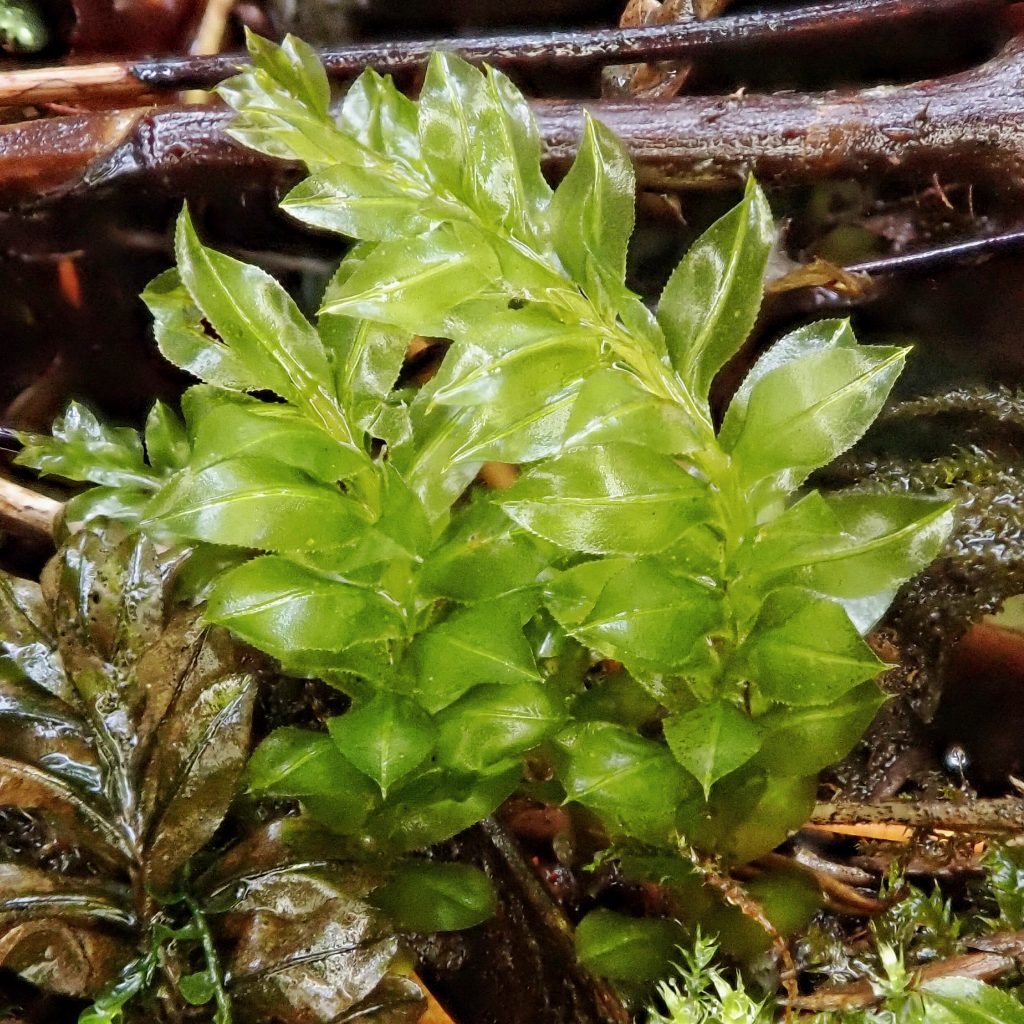
I wasn’t positive that I would find Plagiomnium insigne at The Cliff. It is a very common forest floor species that usually grows on soil or humus, and almost never on rock, although it is occasionally found on stumps and logs. But enough soil and forest duff had washed off the cliff to provide a home for at least this patch of moss.
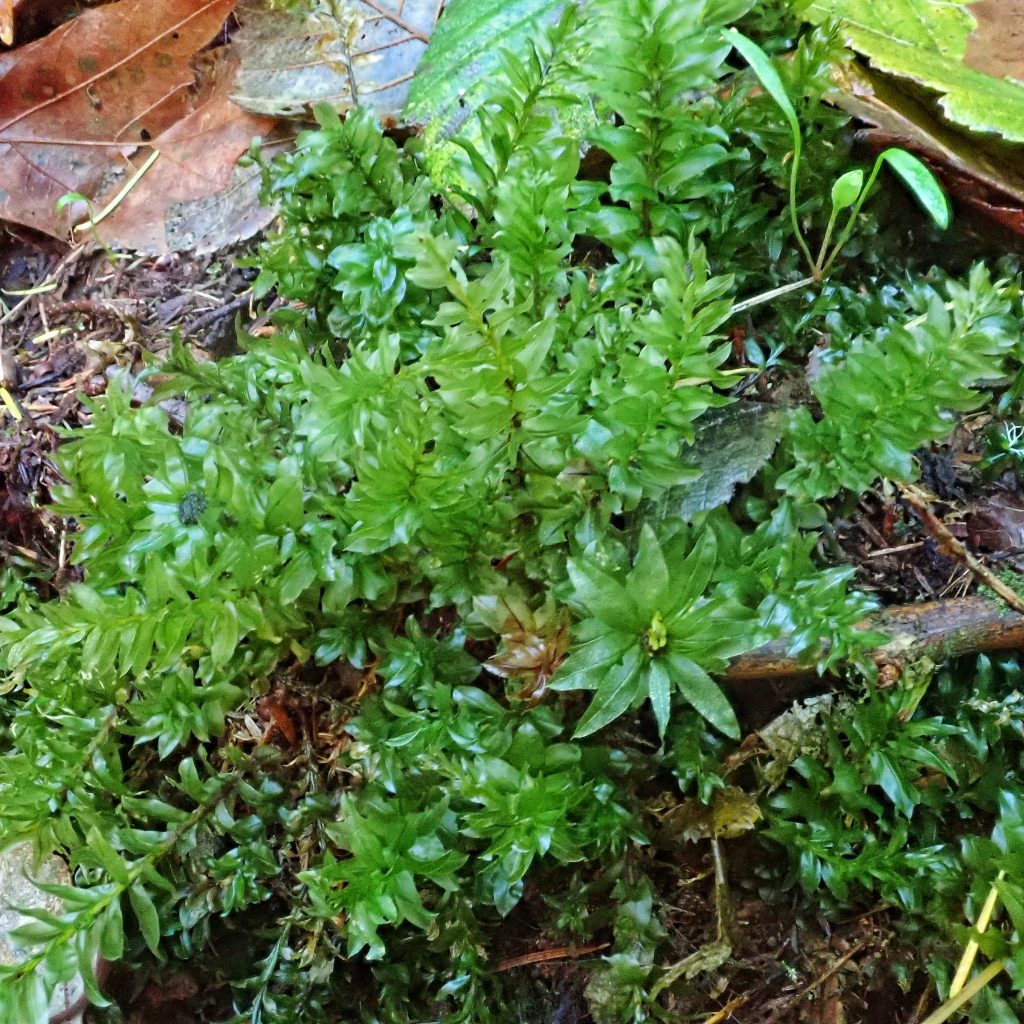
They are an erect moss which produces sporophytes from the tip of the branch of the female plant (an acrocarp). They are the largest of the Plagiomnium spp. and present a very pleasing aspect which tends to draw one’s attention to the large colonies they often form in moist, shaded habitats. It’s like a 4” tall forest.
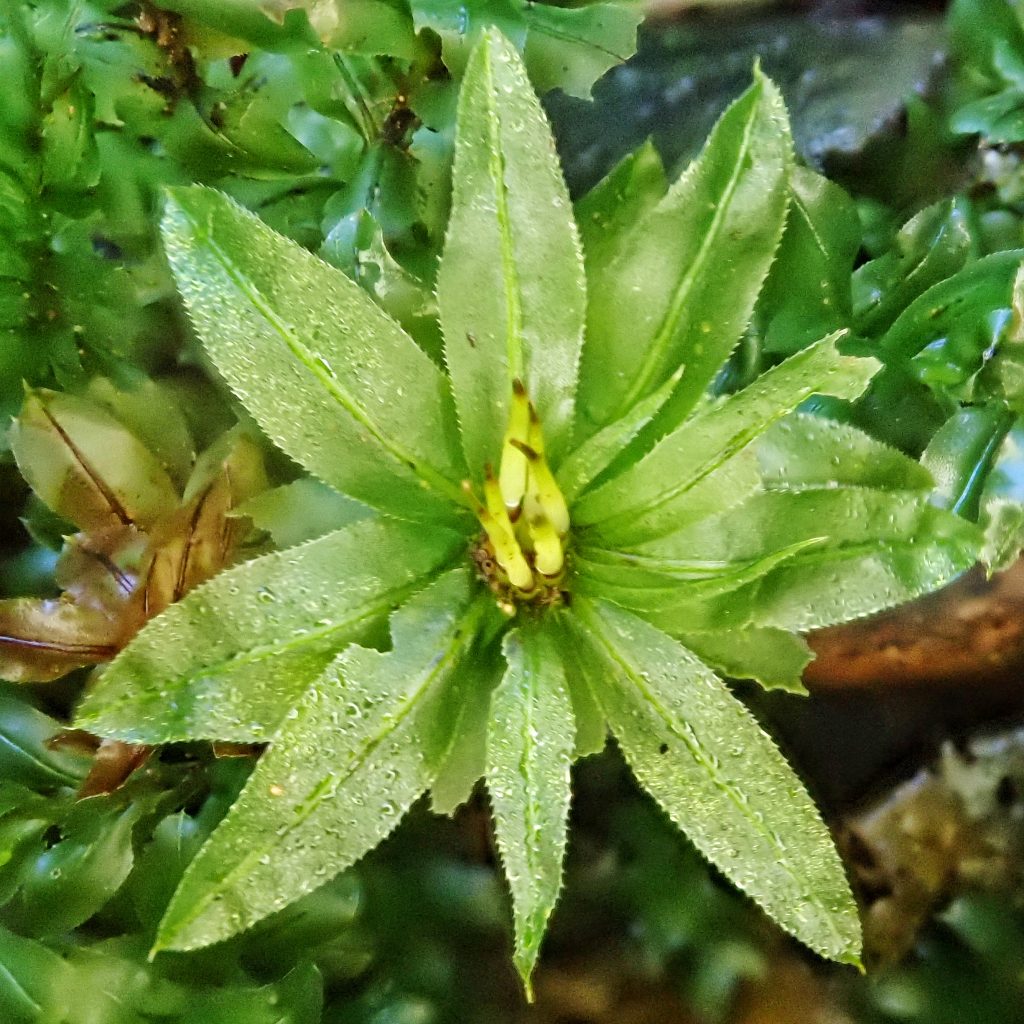
There is something about the density of their upright forms that feels very mysterious, as though they are hiding good and interesting secrets from me, and I am often compelled to get down on hands and knees to peer closely at their interstices, like a giant poking his head into a woodland canopy.
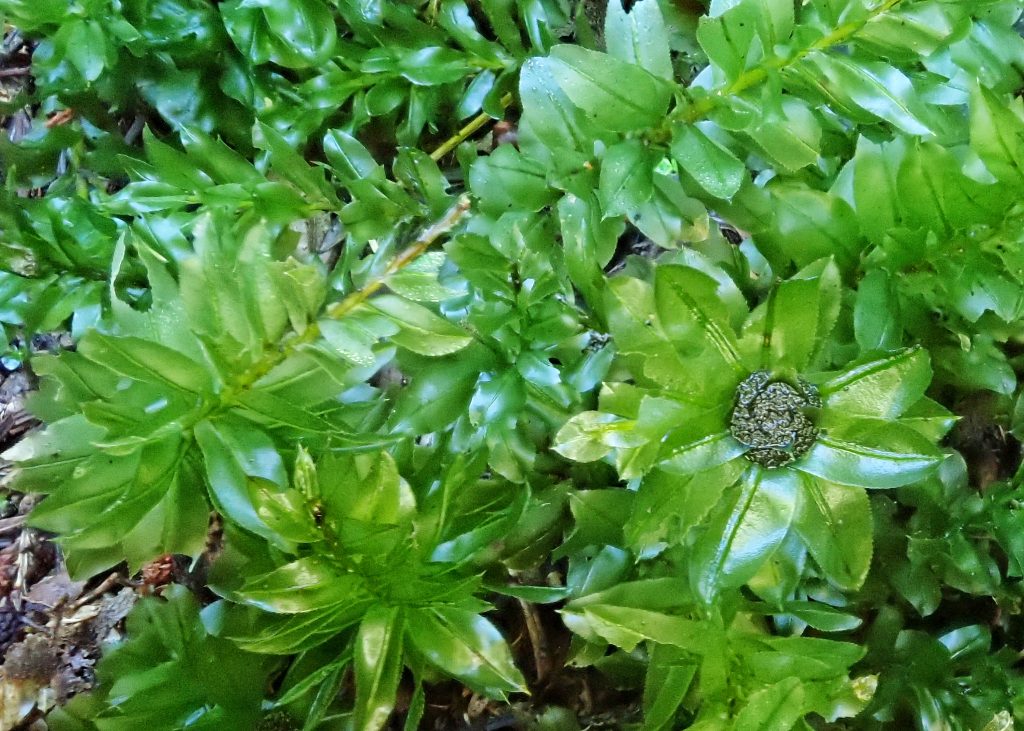
Description– Large, dark green moss, with erect fertile stems and horizontal sterile ones; the leaves are large (up to 8mm long), long decurrent at their base, elliptic in shape, with rows of single teeth on their margins, and an excurrent costa which produces a short point at the leaf tip; the leaf cells are isodiametric (having more or less the same diameter in all directions).
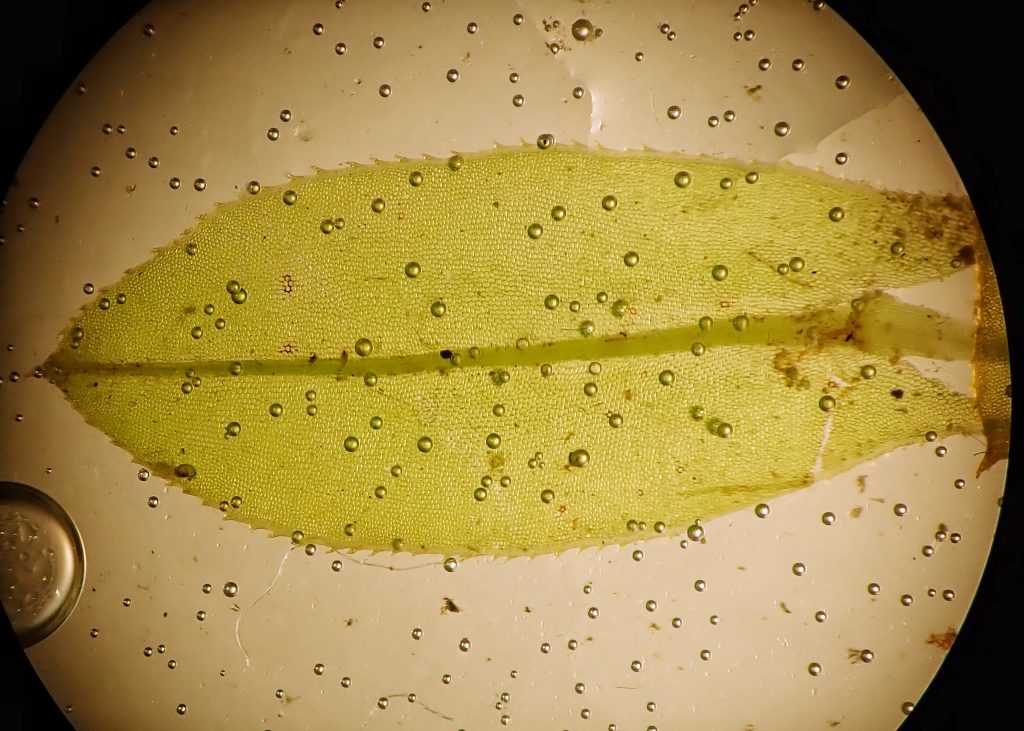
Similar species– Determining anything to species in this family requires magnification and a good key (one can be found here). P. venustum lacks sterile horizontal shoots, is often epiphytic, and its leaves are smaller and only barely decurrent; P. medium is shorter, with smaller leaves, and has elongated leaf cells near the margin. P. rostratum does not have decurrent leaves. Mnium spp have two rows of teeth on the leaf margin, Rhizomnium spp. have none.
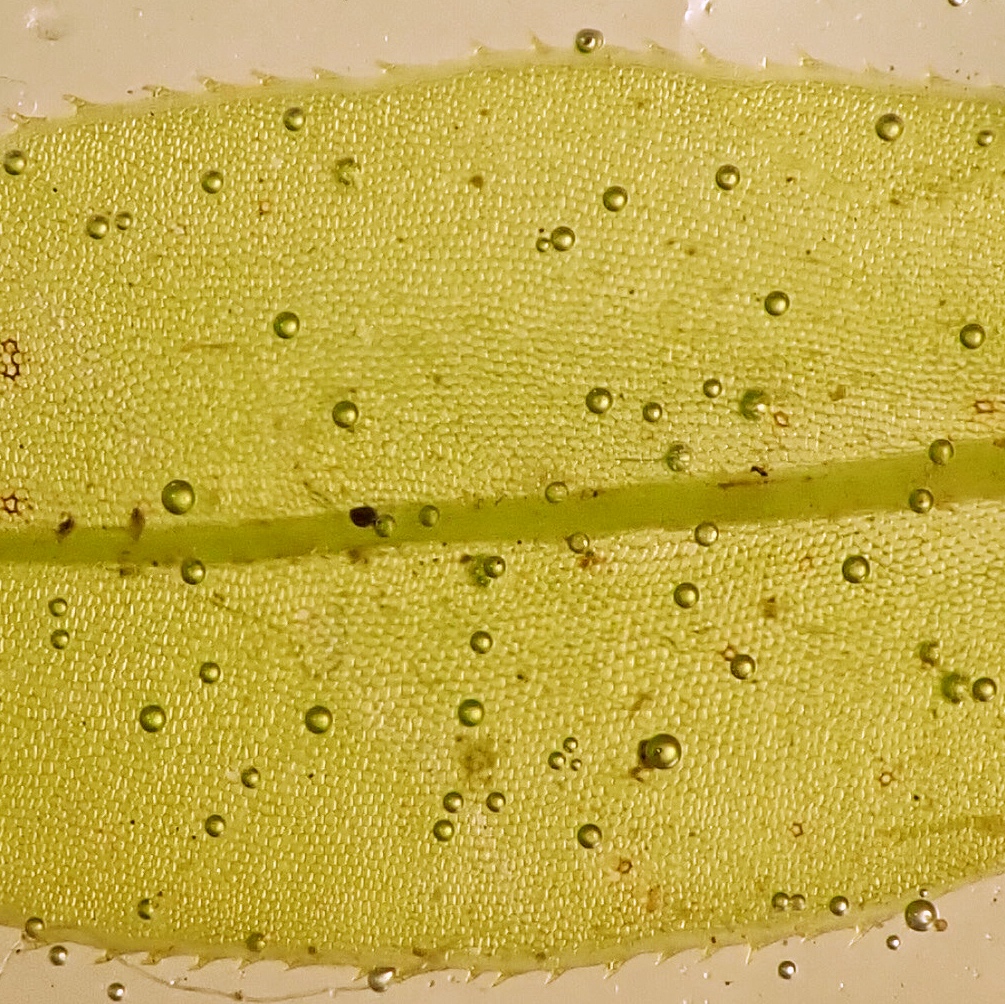
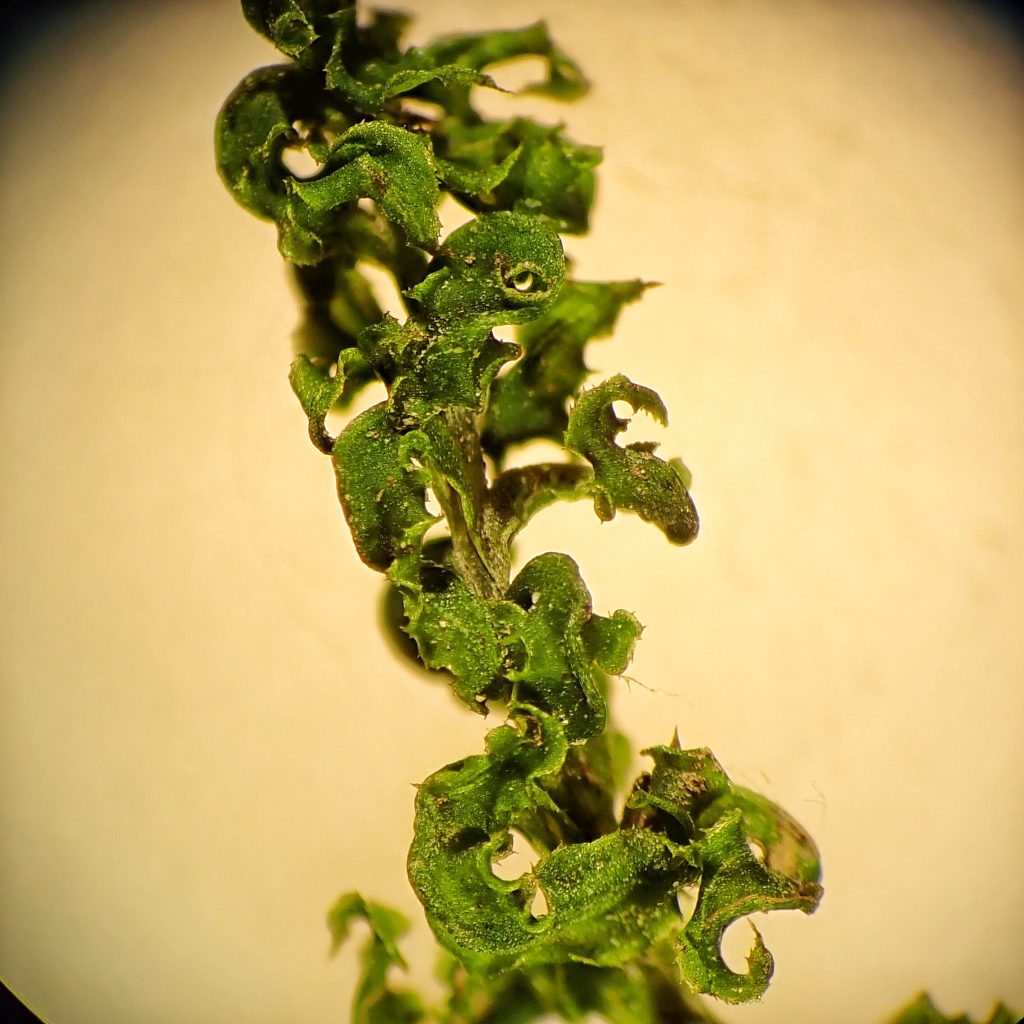
Habitat– On soil and humus in damp, shaded woodlands and forests.
Range– Region wide in appropriate habitat, most common west of the Cascades.
Reproductive timing– Late spring.
Etymology of names– Plagiomnium is from the Greek for ‘oblique’ and ‘moss’, and refers to the sterile arching, horizontal stems. The epithet insigne means ‘remarkable, distinguished, clear, plain’. My guess is that this refers to what I mentioned earlier about it being attention grabbing.
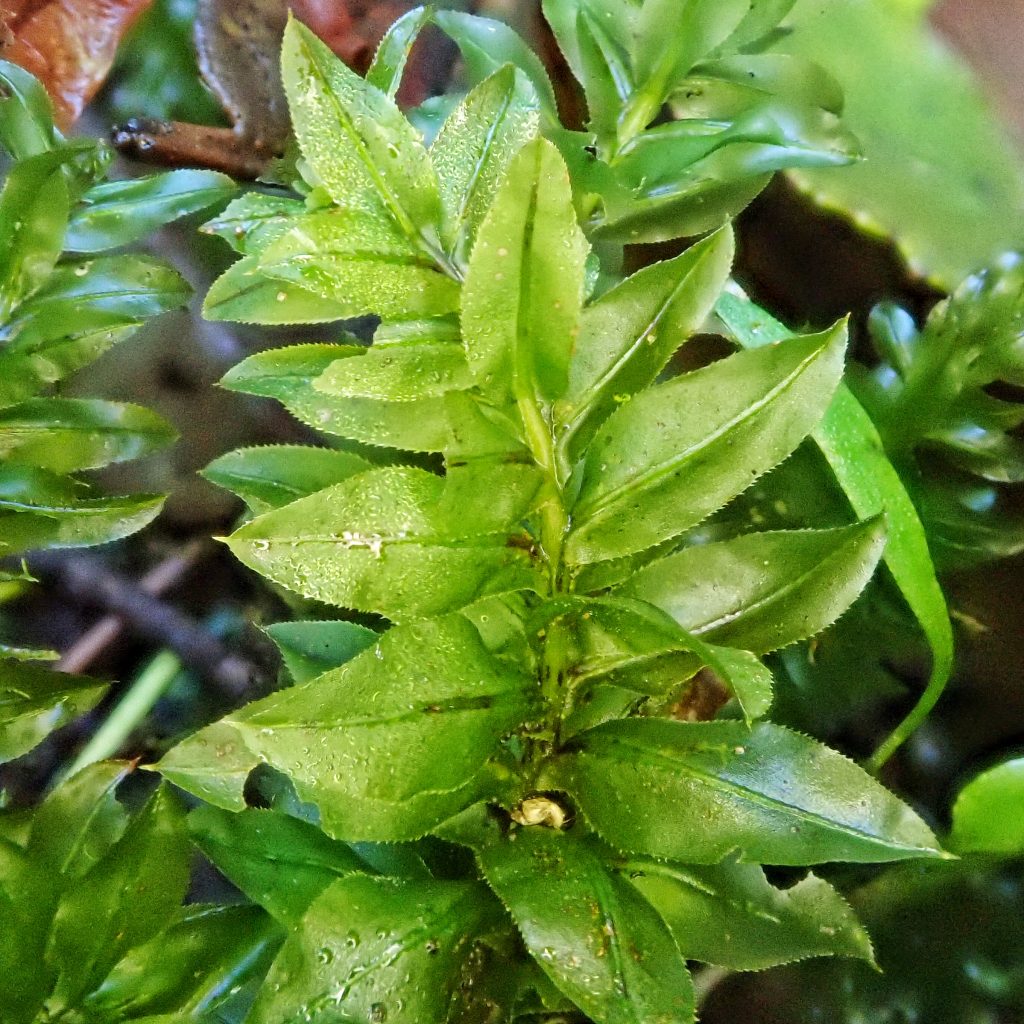
http://www.efloras.org/florataxon.aspx?flora_id=1&taxon_id=250099247
https://www.centralcoastbiodiversity.org/badge-moss-bull-plagiomnium-insigne.html
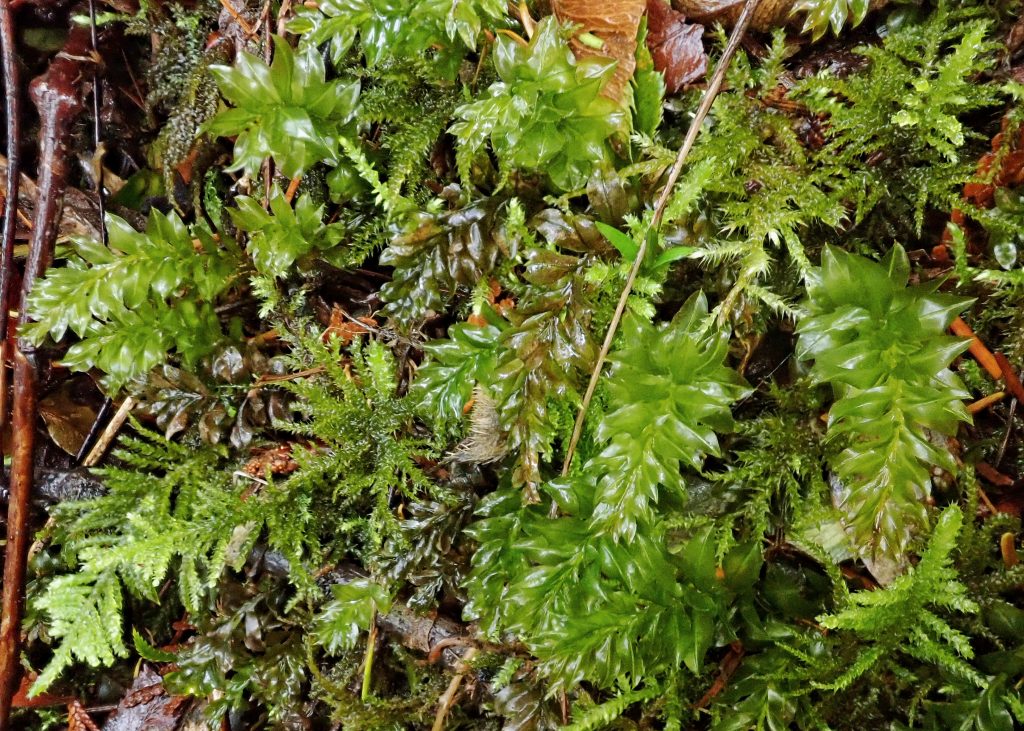
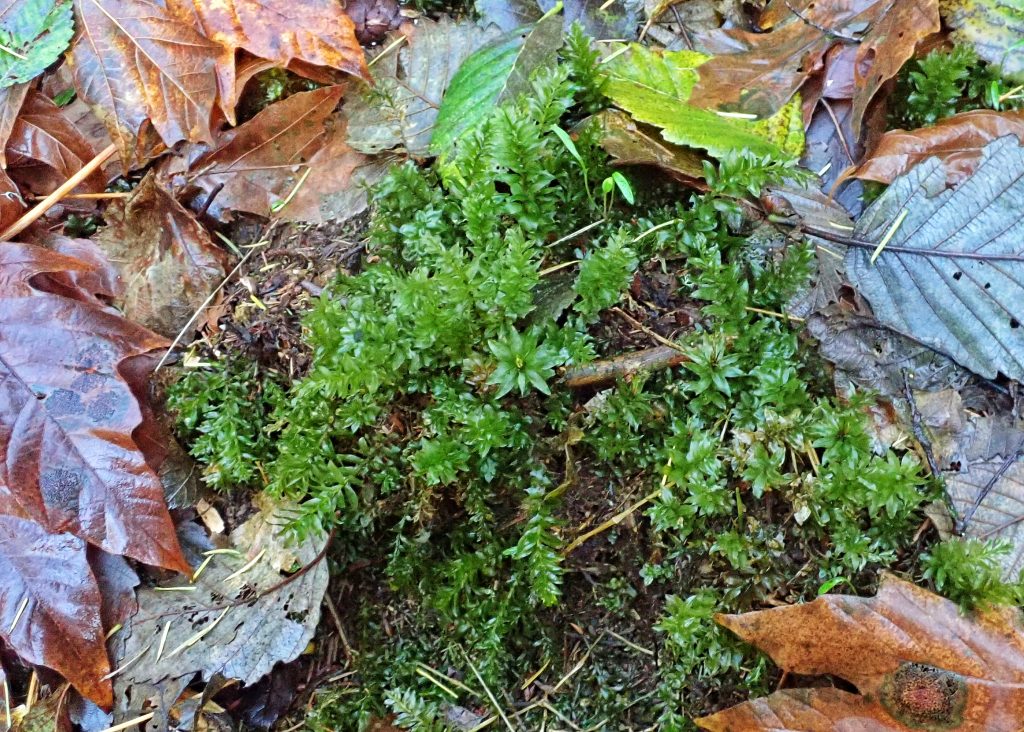
Very pretty moss! 🤩